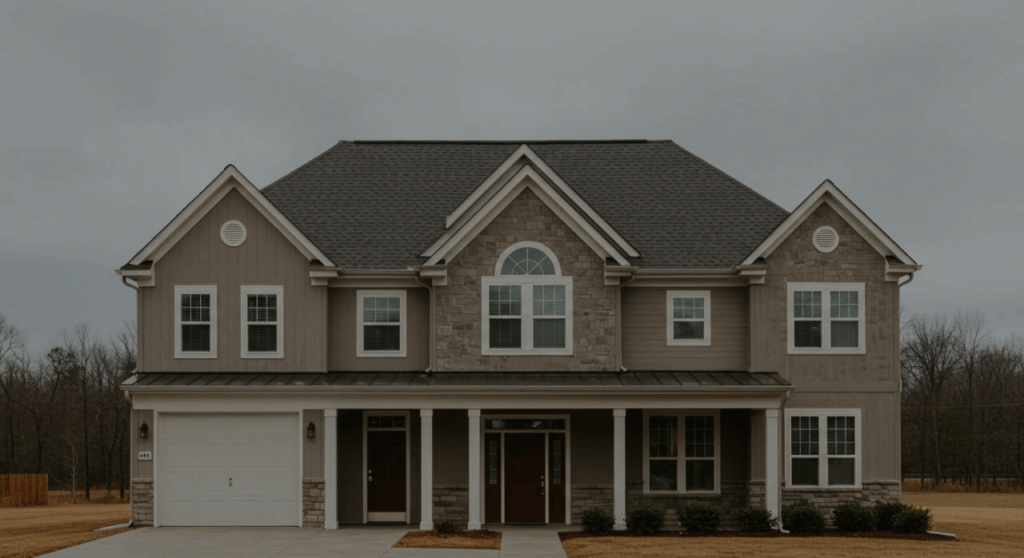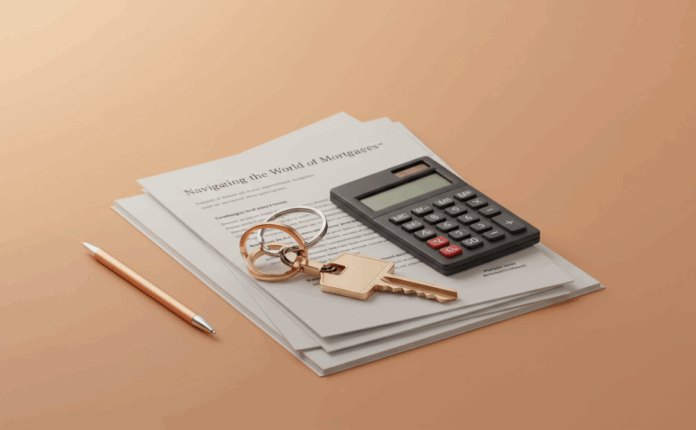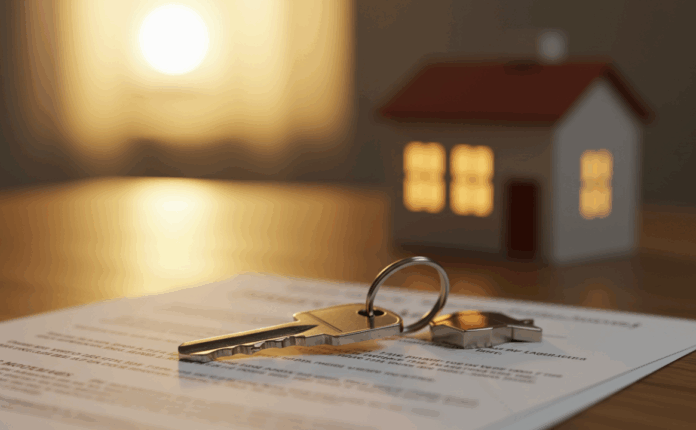Refinancing a mortgage can be a powerful financial move, offering opportunities to lower monthly payments, secure a better interest rate, or shorten the loan term. However, the hurdle of closing costs often deters homeowners from taking the plunge. Enter no closing cost refinancing—a game-changer for those looking to refinance without the upfront financial burden. This article dives deep into the mechanics of no closing cost refinancing, its benefits, potential drawbacks, and actionable steps to make it work for you. Whether you’re a first-time homeowner or a seasoned property investor, understanding this option can save you thousands while optimizing your mortgage.
What Is No Closing Cost Refinancing?
No closing cost refinancing is a mortgage refinancing option where the borrower avoids paying upfront fees typically associated with refinancing, such as appraisal fees, title insurance, and lender origination charges. Instead, these costs are either rolled into the loan balance or offset by a slightly higher interest rate. This approach allows homeowners to refinance without dipping into their savings or writing a hefty check at closing. While it sounds like a dream come true, it’s essential to understand how these costs are managed to ensure the deal aligns with your financial goals.
How It Works
In a traditional refinance, closing costs can range from 2% to 5% of the loan amount, often totaling $5,000 or more for a $200,000 mortgage. With no closing cost refinancing, lenders may cover these fees in one of two ways. First, they might add the closing costs to the principal of the new loan, increasing the amount you owe over time. Alternatively, they could offer a slightly higher interest rate to compensate for waiving the fees upfront. For example, instead of a 3.5% rate, you might get a 3.75% rate, which covers the lender’s costs over the life of the loan. Both methods eliminate the need for out-of-pocket expenses, but they come with trade-offs that require careful consideration.
Why Consider No Closing Cost Refinancing?
This refinancing option is particularly appealing for homeowners who plan to stay in their home for a shorter period or lack the cash to cover upfront costs. By eliminating the immediate financial barrier, no closing cost refinancing makes it easier to access better loan terms, such as a lower interest rate or a shorter repayment period. It’s also a strategic choice for those who want to refinance multiple times to take advantage of falling interest rates without repeatedly paying closing costs. However, it’s not a one-size-fits-all solution, and understanding its pros and cons is critical.
Benefits of No Closing Cost Refinancing
No closing cost refinancing offers several advantages that can make it an attractive option for many homeowners. Below, we explore the key benefits that could help you decide if this approach fits your financial strategy.
Lower Upfront Costs
The most obvious benefit is the elimination of upfront closing costs. For homeowners who don’t have thousands of dollars readily available, this can make refinancing feasible. Instead of scrambling to cover fees like appraisal costs ($300–$700), title search fees ($200–$400), or lender origination fees (1%–2% of the loan), you can redirect those funds toward other financial priorities, such as home improvements or paying down high-interest debt.
Faster Break-Even Point
The break-even point is the time it takes for the savings from a lower interest rate to offset the refinancing costs. In a traditional refinance, high closing costs can push this point out several years. With no closing cost refinancing, the break-even point is often much sooner—sometimes within months—because there are no upfront fees to recoup. This makes it ideal for those who may sell their home or refinance again in the near future.
Flexibility for Short-Term Homeowners
If you plan to move within a few years, no closing cost refinancing can be a smart move. Since you won’t stay in the home long enough to benefit from paying upfront fees for a slightly lower rate, covering closing costs through a higher rate or loan balance minimizes your financial commitment. This flexibility ensures you can still take advantage of refinancing benefits without locking in long-term costs.
Potential Drawbacks to Watch For
While no closing cost refinancing has clear advantages, it’s not without its pitfalls. Being aware of these drawbacks will help you make an informed decision and avoid unexpected financial strain.
Higher Interest Rates
When lenders cover closing costs, they often charge a higher interest rate to offset their expenses. Over the life of a 30-year loan, even a 0.25% increase in your rate can add thousands of dollars in interest payments. For example, on a $300,000 loan, a rate increase from 3.5% to 3.75% could cost an additional $12,000 over 30 years. If you plan to stay in your home for a long time, this could outweigh the benefits of avoiding upfront costs.
Increased Loan Balance
If the lender rolls closing costs into the loan principal, your overall debt increases. For instance, adding $5,000 in closing costs to a $200,000 loan means you’re now paying interest on $205,000. This can extend the time it takes to build equity in your home and increase the total cost of the loan. Homeowners should weigh whether this trade-off aligns with their long-term financial plans.
Limited Lender Options
Not all lenders offer no closing cost refinancing, and those that do may have stricter eligibility requirements, such as higher credit scores or lower loan-to-value ratios. This can limit your options and make it harder to find a competitive deal. Shopping around and comparing offers from multiple lenders is crucial to ensure you’re getting the best terms possible.
Steps to Refinance Your Mortgage with No Closing Costs
Ready to explore no closing cost refinancing? Follow these steps to streamline the process and secure a deal that works for you.
Step 1: Assess Your Financial Goals
Before diving in, clarify why you want to refinance. Are you aiming to lower your monthly payments, reduce the loan term, or tap into home equity? Understanding your goals will help you evaluate whether no closing cost refinancing makes sense. For example, if you’re planning to move in two years, this option might be ideal. However, if you’re staying long-term, a traditional refinance with a lower rate might save you more.
Step 2: Check Your Credit Score
Your credit score plays a significant role in securing favorable refinancing terms. Most lenders require a score of at least 620 for no closing cost refinancing, though a score of 740 or higher will unlock the best rates. Check your credit report for errors and take steps to improve your score, such as paying down credit card balances or correcting inaccuracies, before applying.
Step 3: Shop Around for Lenders

Not all lenders offer no closing cost refinancing, so it’s essential to compare offers from multiple sources, including banks, credit unions, and online lenders. Request quotes that detail the interest rate, loan terms, and how closing costs are handled (e.g., rolled into the loan or covered by a higher rate). Pay attention to the annual percentage rate (APR), which reflects the true cost of the loan, including fees.
Step 4: Calculate the Long-Term Costs
Use a mortgage calculator to compare the long-term costs of no closing cost refinancing versus a traditional refinance. Factor in the higher interest rate or increased loan balance and estimate how long you plan to stay in the home. This will help you determine whether the savings from avoiding upfront costs outweigh the additional interest payments over time.
Step 5: Gather Documentation and Apply
Once you’ve chosen a lender, gather the necessary documents, including pay stubs, tax returns, bank statements, and proof of homeowners insurance. Submit your application and work closely with your lender to complete the appraisal and underwriting process. Be prepared for a home appraisal, even in a no closing cost refinance, as lenders need to verify your home’s value.
Step 6: Review the Loan Estimate and Close
After applying, your lender will provide a Loan Estimate detailing the terms, interest rate, and any costs rolled into the loan. Review this carefully to ensure it aligns with your expectations. If everything checks out, schedule the closing, sign the paperwork, and start enjoying the benefits of your refinanced mortgage.
Tips for a Successful No Closing Cost Refinance
To maximize the benefits of no closing cost refinancing, keep these tips in mind:
- Compare APRs, Not Just Interest Rates: The APR includes fees and gives a clearer picture of the loan’s true cost.
- Negotiate with Lenders: Some lenders may lower their rates or offer better terms to win your business.
- Consider Your Break-Even Point: Calculate how long it will take to recoup any additional interest costs to ensure the refinance makes financial sense.
- Monitor Interest Rate Trends: If rates are falling, a no closing cost refinance lets you refinance again without worrying about repeated upfront costs.
- Consult a Financial Advisor: If you’re unsure about the long-term impact, a financial advisor can help you weigh the pros and cons.
FAQs About No Closing Cost Refinancing
What are the typical closing costs in a traditional refinance?
Closing costs typically include appraisal fees ($300–$700), title search and insurance ($500–$2,000), lender origination fees (1%–2% of the loan), and other charges like recording fees or credit report fees. These can total 2%–5% of the loan amount.
Is no closing cost refinancing really free?
No, it’s not truly free. The lender covers the closing costs by either increasing the loan balance or charging a higher interest rate, which means you pay the costs over time rather than upfront.
Who is no closing cost refinancing best for?
It’s ideal for homeowners who plan to stay in their home for a short period (e.g., 3–5 years), lack the cash for upfront fees, or want to refinance multiple times to take advantage of falling rates.
Can I refinance again if I choose no closing cost refinancing?
Yes, you can refinance again, and the lack of upfront costs makes it easier to do so. However, each refinance will reset your loan term and potentially increase your interest costs, so plan carefully.
How do I find lenders offering no closing cost refinancing?
Start by researching online lenders, local banks, and credit unions. Request quotes from multiple lenders and ask specifically about no closing cost options. Compare APRs and terms to find the best deal.
Conclusion
No closing cost refinancing can be a smart financial tool for homeowners looking to lower their mortgage payments or adjust their loan terms without the burden of upfront fees. By understanding how it works, weighing the benefits against the potential drawbacks, and following a strategic approach, you can make an informed decision that aligns with your financial goals. Take the time to shop around, crunch the numbers, and consult with professionals to ensure your refinance sets you up for long-term success. With the right plan, no closing cost refinancing could be the key to unlocking significant savings and financial flexibility.




40k64g
svohgf